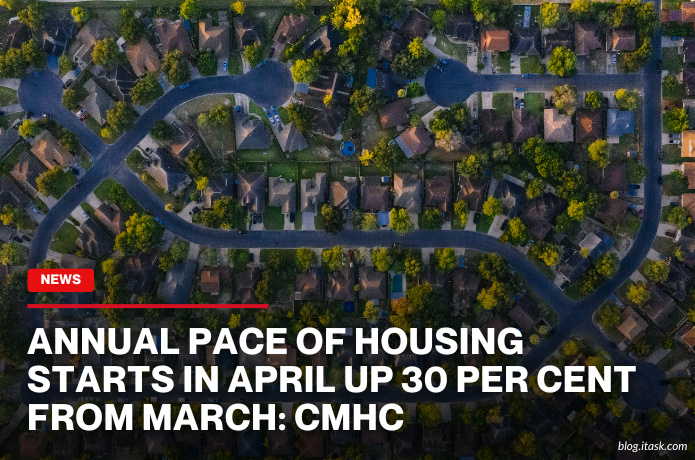Annual pace of housing starts in April up 30 per cent from March: CMHC
Annual pace of housing starts in April up 30 per cent from March: CMHC

Canada's housing market saw a significant boost in April, with the annual pace of housing starts rising by 30% compared to March, according to the Canada Mortgage and Housing Corporation (CMHC). The seasonally adjusted annual rate of new home construction reached 278,606 units, up from 214,205 in March. This surge exceeded economists' expectations, who had anticipated an increase to 227,500 units.
Urban areas contributed notably to this growth, with the annual pace of urban housing starts increasing by 28% to 259,788 units in April, compared to 202,668 units in March. This uptick suggests a revitalization in residential construction activity across Canadian cities.
The rise in housing starts comes amid ongoing efforts to address housing affordability and supply issues in Canada. While the increase is a positive sign, experts caution that sustained efforts are necessary to meet the country's housing needs.
Despite the growth in new constructions, the housing market faces challenges. The Canadian Real Estate Association reported that home sales in April fell by 9.8% compared to the same month last year, indicating a cooling in the resale market.
The disparity between new housing starts and resale activity highlights the complex dynamics of Canada's housing market. While new constructions are on the rise, factors such as interest rates and economic uncertainty continue to influence buyer behavior.
As the government and industry stakeholders monitor these trends, the focus remains on implementing policies and initiatives that promote sustainable growth in housing supply, ensuring that the needs of Canadians are met in the evolving real estate landscape.
